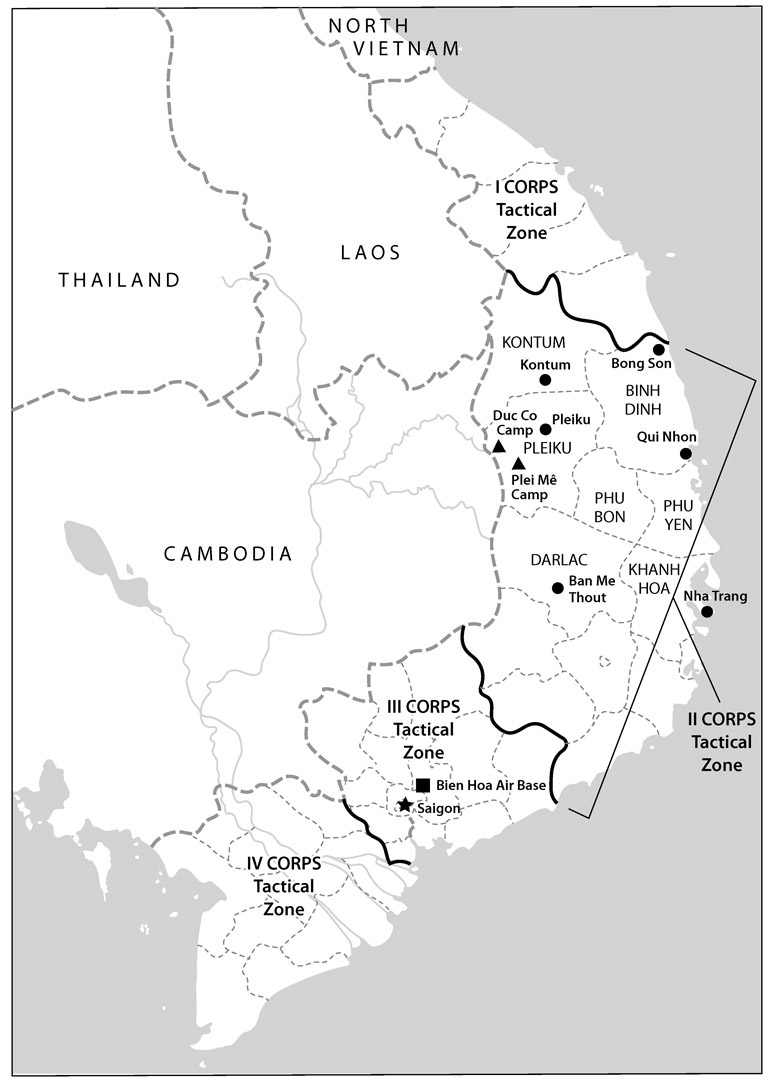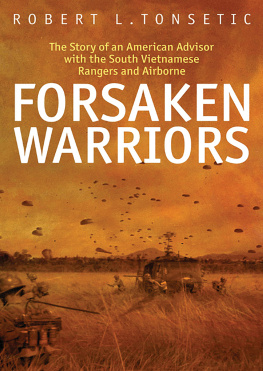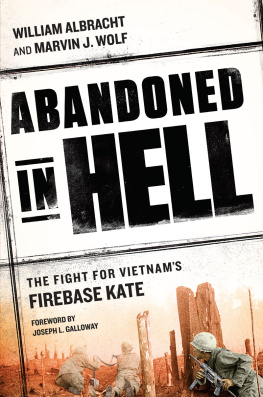J. Keith Saliba is an associate professor of journalism and mass communication at Jacksonville (Florida) University, where he teaches narrative nonfiction and media theory. He has written about military affairs and the Vietnam War for twenty years, first as a reporter and columnist for two daily newspapers, and later as an academic at the University of Florida and JU. His masters thesis explored Esquire magazines coverage of the Vietnam War, and he is a contributing author to the Indochina book series published by Radix Press. In 2018, Saliba presented his research on the psychological effects of the 1968 Tet Offensive to the annual conference of Texas Tech Universitys Vietnam Center & Sam Johnson Vietnam Archive. He continues to work closely with members of the Special Forces Association and Vietnam Veterans for Factual History. Saliba lives with his family in St. Johns County, Florida. This is his first book.
Published by Stackpole Books
An imprint of The Rowman & Littlefield Publishing Group, Inc.
4501 Forbes Blvd., Ste. 200
Lanham, MD 20706
www.rowman.com
Distributed by NATIONAL BOOK NETWORK
Copyright 2020 by J. Keith Saliba
All rights reserved. No part of this book may be reproduced in any form or by any electronic or mechanical means, including information storage and retrieval systems, without written permission from the publisher, except by a reviewer who may quote passages in a review.
British Library Cataloguing in Publication Information available
Library of Congress Cataloging-in-Publication Data available
ISBN 978-0-8117-3881-1 (cloth: alk. paper)
ISBN 978-0-8117-6888-7 (electronic)
 The paper used in this publication meets the minimum requirements of American National Standard for Information SciencesPermanence of Paper for Printed Library Materials, ANSI/NISO Z39.48-1992.
The paper used in this publication meets the minimum requirements of American National Standard for Information SciencesPermanence of Paper for Printed Library Materials, ANSI/NISO Z39.48-1992.
For the men of Plei Me
CONTENTS
Guide

T he Western Highlands plateau swept to the horizon in a rolling expanse of green and brown. Through its center cut the thin line of Provincial Route 5, a single-lane dirt track that connected this remote corner of Pleiku Province with Highway 14 to the east. To the west, the enigmatic, mist-shrouded peaks of the Annamite Range could just be discerned. In quieter times, the view from Warrant Officer (WO) Dean Christensens orbiting UH-1B helicopter gunship would likely have been pleasant, even serene. But these were not quiet times. In fact, all hell was raging below. The communists had besieged the Special Forces camp at Plei Me some twenty kilometers to the southwest, and II Corps had dispatched a relief force to save it. But this narrow dirt road was the only way to reach the camp. And the communists knew it. So theyd sprung the ambush that everybody knew was coming. Now, the rescuers needed a little rescuing themselves. Bright orange fireballs exploded skyward, as the communists unleashed 75mm recoilless rifle, B-40 rocket, and 82mm mortar fire along the length of the relief column. Still, the Army of the Republic of Vietnam (ARVN) armored task force was holding its own, pummeling enemy positions on both sides of the road with 76mm cannon shot and .50 caliber machine gun fire. All along the dirt track, red and green tracer rounds from friend and foe alike intermingled in a beautiful, deadly display.
Tac-air had arrived to tip the scales in favor of the armored task force (ATF). Close-air support (CAS) strike aircraft roared overhead, laying into communist emplacements with a fusillade of rockets, 20mm cannon fire, and thunderous 500- and 750-pound bombs. Indeed, the airspace above Route 5 was crowded with a motley array of aircraft from the four corners of South Vietnam. There were World War IIera prop planes buzzing alongside supersonic F-105s, while helicopter gunships like Christensenscall sign Crocodile 3shared airspace with the tiny, Cessna-like O-1 Bird Dogs piloted by the forward air controllers (FACs). It was the FACs job to marshal all the controlled chaos that is close air support. And today, he had his hands full.
Christensens headset crackled. It was the FAC circling overhead. The young warrant officers two-ship flight of Hog gunships was cleared to start its gun run. Christensen felt the rush of an adrenaline surge. Hed already been in-country for almost a year now. In fact, his DEROS, or estimated date of return from overseas, was just two weeks away. This was nothing new to him. And yet the thrill was there every time. Christensen dipped the nose of his gunship and plunged to earth, wingman hot on his tail. Fast and low was the order of the day. Skimming nap-of-the-earth at better than one hundred knots made it that much harder for enemy gunners to draw a bead on him. The gunships flattened out at tree-top level, the forest on both sides nothing more than a blur through the Hueys Plexiglas. The trees crackled with bright orange flashes, as enemy gunners sought to drown the choppers in a tidal wave of antiaircraft fire.
Suddenly, Christensens headset came alive. Break right! Break right! his wingman screamed.
Christensen banked hard to starboard. No indecision. No second-guessing. Every bit of the gunship pilots hard-won experience had taught him a simple maxim: He who hesitates... dies. A split-second later, a booming shockwave slapped the chopper like a sledgehammer, showering its underbelly with dirt, smoke, and fire. Below, high-explosive munitions gouged a flaming crater in the earth. Above, the silver visage of a B-57 Canberra thundered toward the horizon. The twin-jet tactical bomber had nearly plunked a 500-pounder right on top of Christensens head. His wingman had saved him. But there was no time for thanksor curses for the Canberra pilot. The enemy was still down there. As if on cue, arcing green tracers laced skyward along his flight path. As pilot, Christensen had the MK 4 Mighty Mouse rockets on his Hogs weapon system. His copilot controlled the 40mm grenade launcher mounted in the Hueys nose. The chopper shuddered as the 2.75-inch rockets, two at a time, screamed from the side-mounted pods, their 10-pound warheads exploding in cascading showers of dirt and fire all along the tree line. Below, he could see the telltale flashes of small-arms fire as communist gunners targeted his ship from inside a small house just off the road. Christensen rolled over and pumped two pairs of rockets through its front door. The side walls blew out in a geyser of flame and detritus as its thatched roof crashed down. The pilot swung around and hit it again for good measure.
Just then, Christensens door gunner howled. What happened? Christensen yelled. Got hit in the foot, came the gunners reply. Ruined my new boot! In one of those freak accidents of war, a small-arms antiair-craft round had struck one of the rockets just as it was leaving the pod. The bullet had somehow missed the rockets warhead and struck the motor tube instead. But the ricochet had sent the round careening into the gunners foot. Every man aboarddoor gunner includedwould take that outcome over the alternative any day of the week. A hit to the warhead wouldve blown the chopper from the sky. In war, it was always better to be lucky than good.
Theyd need a bit more of that luck before this day was done. Just as Christensen was about to peel off for Camp Holloway with his wounded man, the pilot felt a problem with the tail rotor. Something was off with the pitch change. Whether theyd been hit, he didnt know. The only thing for certain was that it had to be fixedand right now. Christensen radioed an update to his wingman, then scanned the area for a suitable place to land. Most of the ground in this part of the Western Highlands was covered in low forest and sprawling patches of elephant grass, a ubiquitous regional species that could grow more than twelve feet tall. During more peaceful times, the big game hunters who came to stalk tigers in Vietnam would need to be wary of what lay hidden within that tall, thick grass. These days, it was very adept at concealing enemy troops, too. Just then, Christensen spotted a clearing nearby. The pilot radioed the FAC and told him he was going to set down. Was there anyone available to provide close air support while they got the tail rotor fixed? The FAC said he would see what he could do. Christensen muscled the chopper toward the opening, straining to keep the craft stable enough for a landing. No helicopter pilot relishes the idea of setting down with enemy lurking about. Indeed, if being blasted apart by one of his own rockets was Christensens least favorite thing in the world, landing unprotected in the middle of Indian Country had to be second on that list.






 The paper used in this publication meets the minimum requirements of American National Standard for Information SciencesPermanence of Paper for Printed Library Materials, ANSI/NISO Z39.48-1992.
The paper used in this publication meets the minimum requirements of American National Standard for Information SciencesPermanence of Paper for Printed Library Materials, ANSI/NISO Z39.48-1992.